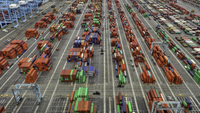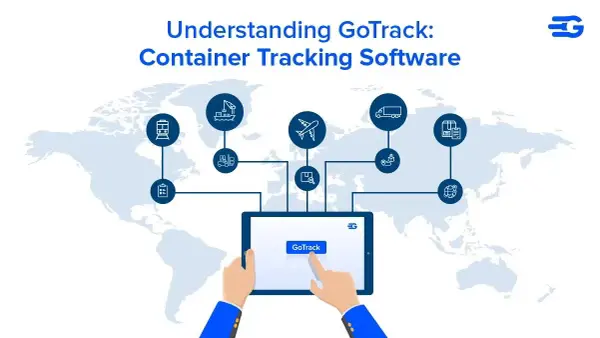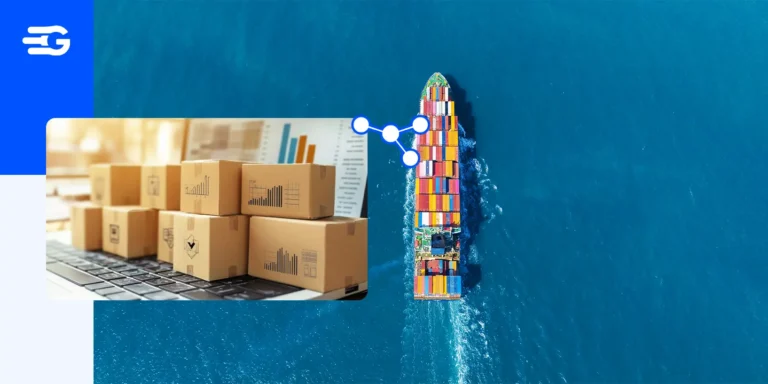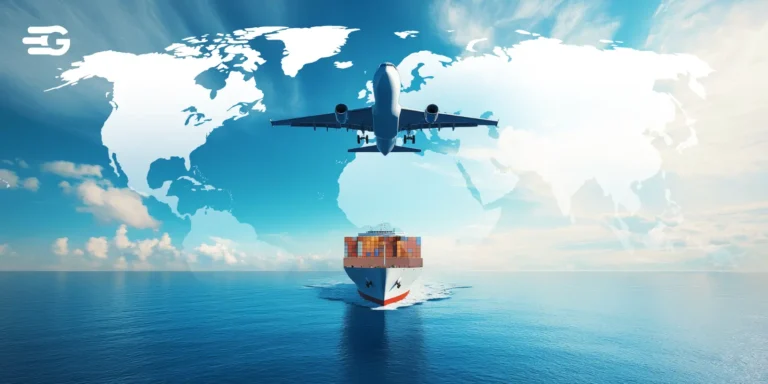Elevate Your Logistics: Dominating Global Shipping with the 8 Critical Container Types
The World of Shipping Containers
In the world of trade and supply chain shipping containers are the bloodline that quietly facilitates the movement of goods across vast oceans and continents. From its humble origins to its indispensable role in modern commerce, the shipping container has a rich history and an enduring legacy. The story of shipping containers traces back to the 18th century in England, where rudimentary wooden boxes were first employed to transport coal. However, it wasn’t until the mid-20th century that the concept truly blossomed into its modern form, thanks to the innovative mind of Malcolm McLean. A truck driver by trade, McLean recognized the inefficiencies of traditional cargo handling methods and envisioned a solution that would revolutionize the shipping industry.
In 1956, McLean introduced the world to the modern intermodal shipping container, constructed of corrugated steel and designed for easy movement using cranes. This breakthrough invention transformed the landscape of global trade, standardizing the way goods were packed, transported, and unloaded.
The impact of shipping containers cannot be overstated. They enabled businesses to expand their reach to distant markets, facilitated the exchange of goods on a scale never before imagined, and played a pivotal role in driving economic growth and development worldwide.
In this comprehensive guide, we will delve into the various types of containers in shipping, explore their features and functionalities, and provide insights into their suitability for different types of cargo. Whether you’re a seasoned logistics professional seeking to optimize your supply chain or a newcomer curious about the inner workings of global trade, this guide promises to offer valuable insights and perspectives into the world of containerized shipping.
Common Types of Containers and Their Uses
Shipping containers serve as the backbone of global trade, providing a reliable and secure means of transporting goods across vast distances. These standardized units play a crucial role in the logistics network, facilitating the movement of various commodities, from consumer electronics to raw materials. Understanding the common types and uses of shipping containers is essential for efficient logistics management, ensuring that goods are transported safely and efficiently from origin to destination.
Standard Dry Storage Containers
Standard dry storage containers are the backbone of the global logistics network, providing a reliable means of transporting a wide range of goods. Crafted from durable steel, these containers are designed to withstand the rigors of maritime transport and port handling.
Available in standard sizes such as 20 feet and 40 feet, standard dry storage containers offer ample space for various types of cargo. Their spacious interiors can accommodate anything from standardized pallets to irregularly shaped commodities.
One of the key advantages of standard dry storage containers is their versatility. They seamlessly integrate into different modes of transportation, including trucks, trains, and ships. Their standardized dimensions make them easy to handle and transfer, ensuring smooth logistics operations. Furthermore, emerging technologies in the form of logistic management software are turning over new leaves in the realms of supply chain operations.
Refrigerated ISO Containers
Refrigerated ISO containers, also known as reefers, are essential for transporting perishable goods that require temperature-controlled environments. Constructed from sturdy steel, these containers feature advanced refrigeration systems that maintain precise temperature levels to preserve the freshness of sensitive cargo.
Reefers come equipped with state-of-the-art insulation and ventilation systems to ensure uniform cooling and optimal air quality. These features are crucial for preventing spoilage and maintaining the quality of perishable items such as fruits, vegetables, meats, and pharmaceuticals.
The significance of refrigerated containers in global trade cannot be overstated. They enable perishable goods to be transported over long distances without compromising their freshness, allowing businesses to access distant markets and meet consumer demand for fresh produce.
Open-Top and Flat-Rack Containers
Open-top containers and Flat rack containers are other specialized container types designed for transporting oversized or bulky cargo. Unlike standard containers, flat rack containers feature removable sides, allowing for easy loading and unloading of goods from the sides or top.
These containers are ideal for transporting goods such as heavy machinery, industrial equipment, or stacks of timber that exceed the height limitations of conventional containers.
The absence of fixed walls provides flexibility in loading and securing cargo, making it easier to transport irregularly shaped items.
Flat rack containers come in collapsible and non-collapsible variants, offering different levels of flexibility and strength. Collapsible flat racks feature sides that can be folded down when not in use, while non-collapsible flat racks offer more structural strength and stability.
Specialized Containers for Specific Cargo Needs
Specialized containers cater to specific cargo needs, enhancing transportation efficiency. For instance, refrigerated containers maintain optimal temperatures for perishable goods like seafood and fruits, ensuring freshness during long journeys. Tank containers are ideal for transporting liquids such as chemicals and wine, offering secure containment.
Tank Containers for Liquids
These are crafted from durable stainless steel, ensuring they can withstand the rigors of transportation. To add an extra layer of protection, these tanks are often insulated and coated with aluminum or polyurethane, shielding your liquids from external elements and maintaining their integrity throughout the journey.
Safety is paramount when it comes to transporting liquids, and tank containers are equipped with features to ensure just that. They adhere to stringent international standards set by the International Organization for Standardization (ISO), guaranteeing quality and reliability. Tank containers come in various sizes, but what’s more important is their capacity.
Whether it’s fuel, dairy products, chemicals, or liquid food items, tank containers have got you covered. They’re versatile, environmentally friendly, and designed to make loading and unloading a breeze. So, the next time you need to transport liquids, trust in the reliability and efficiency of tank containers to get the job done right.
Ventilated Containers for Organic Products
Ventilated containers, also known as coffee containers, are specifically designed to provide the perfect environment for organic products that are prone to moisture. Unlike standard dry containers, these ventilated marvels have built-in ventilation systems that allow for proper airflow, preventing the buildup of humidity that could spoil your precious cargo.
Now, you might be wondering, what’s the big deal about ventilation? Well, for organic products like coffee and cocoa, moisture is the enemy. Excess humidity can lead to mold and mildew growth, ruining the flavor and quality of your goods. But with ventilated containers, you can say goodbye to soggy beans and hello to perfectly preserved freshness.
Insulated or Thermal Containers
Unlike standard shipping containers, insulated containers are designed to create a stable environment inside, shielding your goods from temperature fluctuations and external conditions. Insulated containers typically have a double-wall structure, with insulation sandwiched between the inner and outer layers. This insulation prevents heat and cold from seeping in or out, maintaining a consistent temperature inside the container.
There are different types tailored to specific needs, like regular ice totes for food and beverage industries, dry ice totes for frozen products, and specialty containers for onboard handling or chilling applications. Each type is designed to meet the unique requirements of different cargo, ensuring optimal protection throughout the shipping journey.
Innovations in Container Technology and Design
Innovations in container technology and design are revolutionizing the way goods are transported across the globe. Gone are the days of simple metal boxes—today’s containers are equipped with cutting-edge features to meet the evolving needs of the logistics industry. Today, customizability is key in the modern container industry, with containers tailored to meet specific storage or commercial needs.
Eco-Friendly Container Solutions
One exciting development is the use of renewable materials in container construction. Instead of relying solely on traditional materials like plastic and Styrofoam, manufacturers are turning to biodegradable, recyclable, and compostable alternatives. These materials not only minimize waste but also promote a circular economy by closing the loop through recycling and composting processes.
Moreover, container designs are becoming more efficient and environmentally friendly. Companies are embracing minimalist approaches to packaging, reducing unnecessary layers and focusing on simplicity and functionality.
Additionally, advancements in smart packaging technologies are revolutionizing the industry as the debate between Green vs. Sustainable supply chain management is gaining immense traction lately. Intelligent labels and uniqode QR codes provide consumers with valuable product information while promoting recycling practices. This level of transparency empowers consumers to make informed choices and actively participate in sustainability efforts.
Smart Containers and IoT Integration
Among the latest advancements is the emergence of Smart Containers, a paradigm shift in traditional shipping methods, driven by the integration of Internet of Things (IoT) technology. At their essence, Smart Containers are conventional shipping containers augmented with IoT sensors. These sensors diligently monitor and transmit data about various environmental parameters, including temperature, humidity, and location.
The integration of IoT technology into shipping containers bestows a multitude of benefits upon stakeholders. Enhanced visibility enables informed decision-making and accurate forecasting, while immediate alerts mitigate the risk of financial losses due to cargo damage.
Choosing the Right Type of Container for Your Business Needs
Selecting the appropriate container type is paramount for businesses engaged in shipping goods, ensuring both the safety and efficiency of cargo transportation. In this section, we’ll delve into essential considerations for choosing the right container, including assessing cargo requirements, understanding the impact of container choice on supply chain efficiency, and exploring global trends and potential regulatory changes influencing container standards.
Assessing Cargo Requirements and Container Capacities
When it comes to shipping goods, choosing the right container type is crucial for ensuring the safe and efficient transportation of your cargo. Here are some helpful tips to guide you in selecting the most appropriate container type for different types of cargo.
First and foremost, consider the size of your cargo. Shipping containers come in various sizes, including 10 feet, 20 feet, and 40 feet. While the 20-foot and 40-foot containers are the most commonly used, it’s essential to match the size of the container to the dimensions of your cargo. If you have bulky or oversized items, a larger container may be necessary to accommodate them comfortably and prevent damage during transit.
Next, assess the nature of your cargo. Different types of cargo require different container specifications. Alongside, consider the weight of your cargo as well. Some containers have weight limitations that may impact your choice. Heavy items may require reinforced containers or flat rack containers designed to support heavier loads securely.
Finally, take into account your budget and shipping requirements. Evaluate the cost of different container options, including factors like size, condition, and special features. Consider how frequently you’ll be using the container and whether it’s worth investing in a higher-quality option for long-term reliability.
Impact of Container Choice on Supply Chain Efficiency
Choosing the appropriate container for shipping has a significant impact on supply chain efficiency and cost reduction. When you select the right container, tailored to the size, type, and weight of your cargo, you ensure smoother operations throughout the supply chain.
Firstly, matching the container size to your cargo dimensions minimizes wasted space, allowing for more goods to be transported in a single shipment. This optimizes transportation capacity and reduces the number of trips needed, ultimately cutting down on fuel consumption and transportation costs.
Secondly, using specialized containers for specific cargo types, such as refrigerated containers for perishable goods or tank containers for liquids, ensures the safe and secure transport of sensitive items. This reduces the risk of damage or spoilage during transit, eliminating the need for costly replacements or compensation.
Moreover, the advent of the best supply chain visibility software is revolutionizing how businesses evaluate the impact of container preferences and their direct influence on supply chain efficiency. These advanced tools provide real-time insights and analytics, enabling companies to optimize operations and make data-driven decisions.
Global Trends and the Future of Container Use in Shipping
One key trend is the increasing integration of advanced technologies like IoT, which enables real-time monitoring of cargo and enhances operational efficiency. This connectivity bridges the physical-digital gap, revolutionizing how shipping containers are utilized and managed.
Moreover, the emphasis on green shipping initiatives is expected to shape container usage, with a focus on sustainability and reducing environmental impact. This could lead to the adoption of eco-friendly container designs and alternative fuels, ushering in a more sustainable era for the industry.
The Growing Demand for Customized Containers
As the world embraces sustainability and seeks innovative solutions to space constraints, the demand for customized shipping containers is rising. These steel boxes, once solely utilized for transporting goods, are now being transformed into versatile spaces tailored to unique requirements.
Businesses and individuals are increasingly drawn to customized containers due to their cost-effectiveness and time efficiency. Unlike traditional construction methods, modifying containers is relatively inexpensive and requires minimal on-site assembly, making it an attractive option for quick setup needs.
Regulatory Changes and Container Standards
Looking ahead, potential regulatory changes could significantly impact container standards and their usage in the shipping industry. As the world increasingly focuses on sustainability and safety, regulatory bodies may introduce new rules to address environmental concerns and enhance container security.
For instance, there could be stricter requirements for container construction materials to ensure durability, corrosion resistance, and recyclability. Regulations may also mandate improvements in container design to enhance safety during transportation and handling, reducing the risk of accidents and injuries.
With the rise of digitalization and IoT technology, future regulations may incorporate standards for smart containers equipped with sensors for real-time monitoring of cargo conditions. These smart containers could play a crucial role in optimizing logistics operations, improving efficiency, and reducing the risk of cargo damage.
Furthermore, as the global supply chain becomes increasingly interconnected, regulatory changes may focus on harmonizing container standards across different regions to facilitate seamless international trade. Standardization could streamline customs procedures, reduce delays, and enhance overall supply chain efficiency.
In conclusion, understanding the diverse types of shipping containers is crucial for businesses navigating the complex world of global logistics. From standard dry storage containers to specialized units for specific cargo needs, each container type serves a unique purpose in facilitating the movement of goods across the globe. By choosing the right container type and leveraging advancements in technology, companies can optimize their supply chains, enhance efficiency, and meet the evolving demands of the shipping industry.





